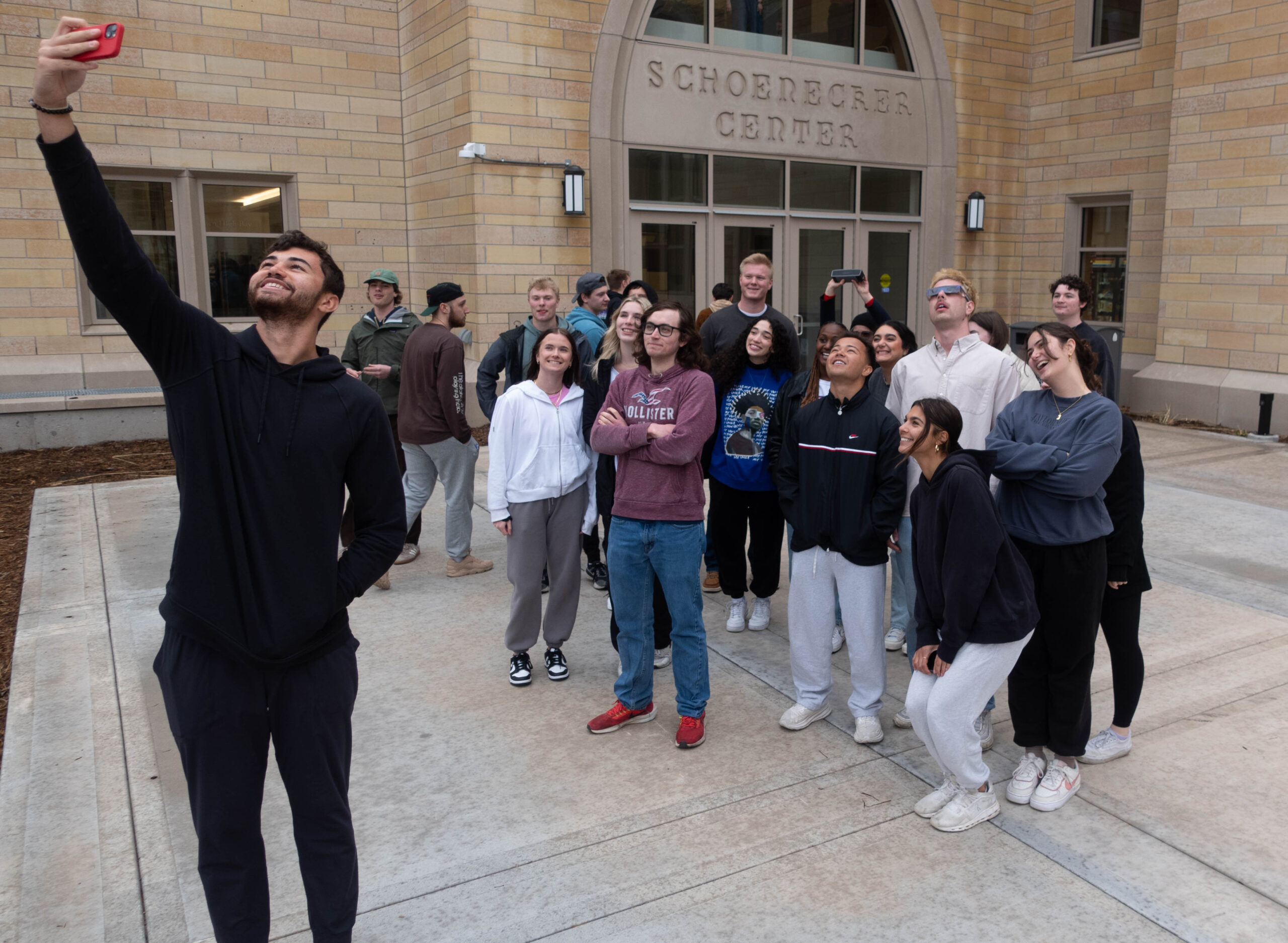St. Thomas students were left disappointed on Monday as a rare total solar eclipse was blocked by dense cloud coverage over much of the Midwest.
Total solar eclipses are rare because the moon completely blocks out the light of the sun and can only be viewed for a short amount of time in certain areas. The line of total shadow — which runs diagonally from Mexico to northern New York — missed Minnesota, especially with the cloud cover. Sky conditions across the Twin Cities were cloudy for all of Monday afternoon, according to data from the National Weather Service.
“(We) were hoping that this first layer of clouds (would) move, and we (would) see something through,” said Marie Lopez Delpuerto, chair of the physics department.
Delpuerto had good memories of the total solar eclipse in 2017. Although it was a cloudy day, the weather cleared up right in time for the eclipse. She said remembered a crowd of 50-60 people watching it.
First-year Seth Borne said that the eclipse was disappointing.
“Really cool that it happened, really unfortunate that we obviously had pretty terrible weather,” Borne said.
Borne said that he went outside to watch the solar eclipse and couldn’t find the sun.
The cloud cover also affected St. Thomas events.
Adam Green, the program director of the observatory, wrote in an email to TommieMedia that he had to cancel an eclipse viewing event at the observatory due to the weather.
However, some students still tried to watch the eclipse.
A group of people gathered outside the Schoenecker Center to view the eclipse but soon left once they realized they wouldn’t be able to see it.
“It’s rare to have totality; these eclipses where you have partial covering are much less rare than the total eclipse that is happening today,” Delpuerto said.
Emmy Schulz can be reached at schu4600@stthomas.edu.
Anya Capistrant-Kinney can be reached at capi2087@stthomas.edu.
Justin Jones and Kevin Lynch contributed to this report.



